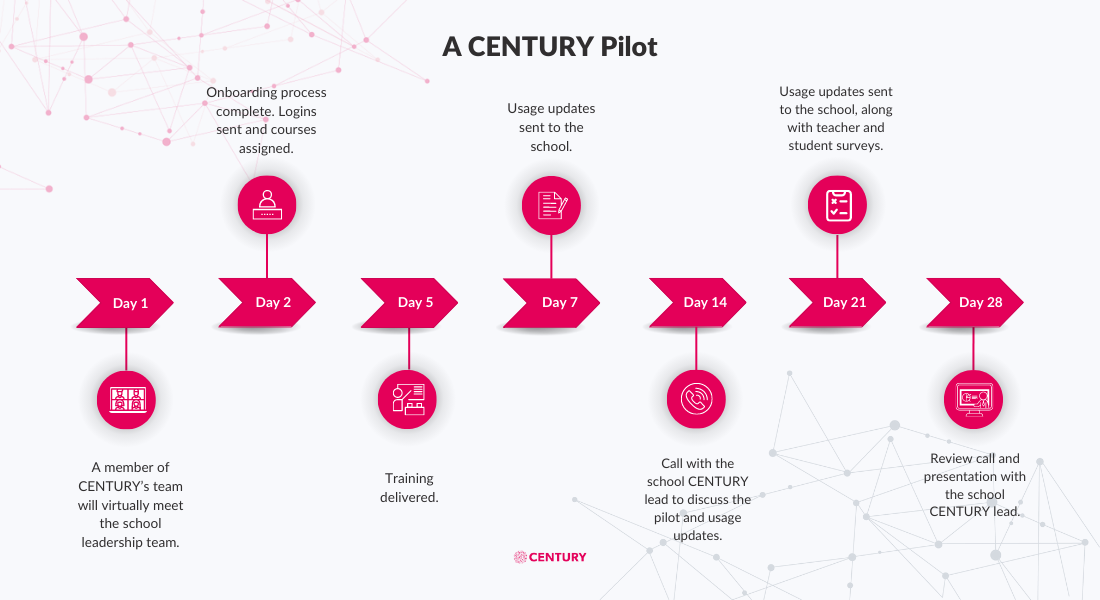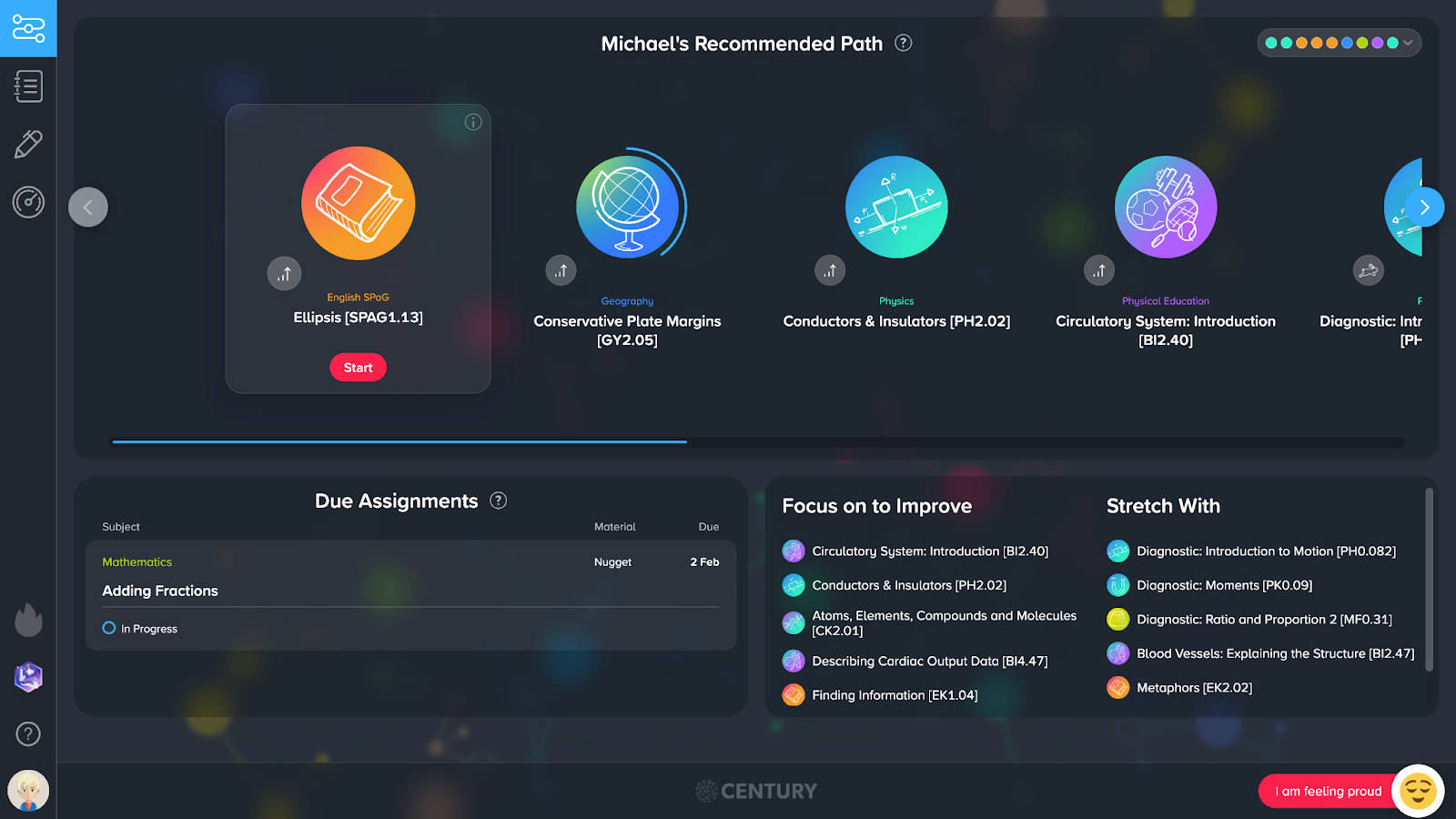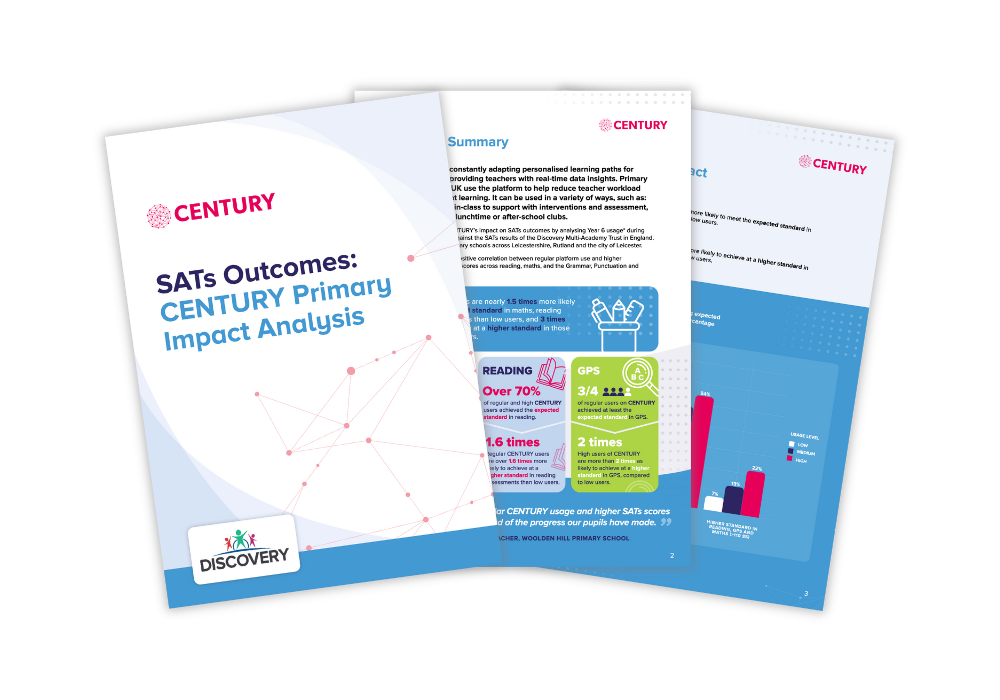Estimated reading time: 12 minutes
Chris Richards, Deputy Head of Curriculum at CENTURY, completed his MBA in Educational Leadership. As part of his dissertation, he conducted a study where several CENTURY schools’ implementation strategies were analysed to provide a recommendation on how to successfully implement technological change within educational settings.
Towards the end of 2022, the government published a report on the successful implementation of education technology in schools and colleges. The research is welcome, as there is a pressing need to develop a strong evidence base, especially in the wake of the pandemic and the resultant, rapid increase in the use of technology within education across the UK.
The government’s report rings true from our experience with thousands of schools around the world in recent years. We truly believe that useful advice for successful implementation of edtech should be shared and talked about more than it currently is and made available for schools and teachers to benefit from. In that vein, we would like to share some of our findings from our own research at CENTURY on the successful implementation of edtech that could be used across the sector.
While a theory of change management isn’t essential, good experience of managing change (and common sense!) is
Many school leaders we have worked with have told us that they were not aware of any specific change management models or theories of change, and did not consciously use any in the implementation of CENTURY. Nonetheless, leaders referenced their personal experience of implementing successful change within their organisations and that of their leadership teams.
Interestingly, despite not being aware of the theoretical models, the successful change processes at a number of schools embedding CENTURY followed the steps of proven models such as Kotter’s accelerators or ADKAR. This would align with the EEF which found that “often, individuals and schools that implement well tend do so by instinct, or what might be called common sense”.
Don’t underestimate the importance of your coalition of champions
Almost all of the organisations that we have discussed implementation strategies with in detail have built a coalition of staff champions to lead the change. Not all of these schools and colleges call them ‘champions’, of course, and several instead have opted for learning directors, technology leads or subject leads as their agents for change. The consistent point was that these leads or champions were involved from the beginning of implementation to oversee a cogent and coherent strategy.
When building this coalition, it was found beneficial to include a variety of staff and stakeholders, so the coalition represents a cross-section of teachers for each subject and other support staff. For example, including a sceptical voice or two in your coalition can help identify, and overcome, potential roadblocks on the pathway proactively and efficiently. Likewise, these coalitions work best when including a range of confidence, not just the most technologically-minded staff, and a good number of experienced teachers who know the context of the school, curriculum and schemes of work well.
Engineer (and celebrate!) short-term wins
All of the organisations we have worked with to implement CENTURY over the past few years have used various strategies to enable and generate short-term wins in one way or another. This included setting engagement and usage targets each half-term or creating and embedding desired learning routines linking to the curriculum. CENTURY, for example, has templates for certificates and leaderboard posters available for customers to support celebrating learner success.
Pilots and tests
Running an effective pilot, as the government research paper also highlights, is commonly a successful edtech implementation strategy. Here at CENTURY, we have experience of setting up and providing training for pilots across many different organisations including international schools, secondary schools and primary schools. The time investment of a pilot allows more capacity for leaders to consider the best usage models and next implementation steps for their context and learners, making longer term success more likely.
To run a successful pilot programme for a platform like CENTURY, we have found there must be an emphasis placed on the importance of knowledge and training on how to use the product in line with the implementation plan within the organisation. This is particularly important for both teachers and learners alike.
An effective pilot usually takes place with one or a few teachers (and cohorts) that volunteer for participation and are given time and opportunity to explore with the permission to fail. Following a set timeframe allows those involved to evaluate and identify lessons learnt before training and rolling out to the wider organisation. Developing these models of best practice at this early pilot stage provides the confirmation and suitability of the technology for the organisation, which in turn helps to gain the support and momentum when looking at full implementation with the rest of the staff and learners.
Education organisations can implement large scale change effectively and quickly
CENTURY can particularly be effective as part of a solution for remote learning in many contexts. Speaking to school and college leaders, many of whom we began working with during or coming out of the pandemic, they told us that their organisations had a sense of urgency and awareness for the need for change and a general positive attitude towards edtech and its implementation.
The pandemic and the lockdowns certainly functioned as a large ‘thawing event’, as per Lewin’s stages of change model, providing the stimulus for change in schools and colleges across the world. Furthermore, though the pandemic and resultant lockdowns were by no means a desired or sought after situation, the past few years have demonstrated that the educational community of teachers, learners and guardians are resilient and that large scale effective change is possible.
The most serious challenge is infrastructure
The main barrier identified from our research was learner access to technology hardware and the internet, with some students only able to engage with online platforms like CENTURY when a teacher books time in the computer lab. The government’s research paper highlighted the key infrastructure challenges first and foremost, making specific reference to the capacity of school and college infrastructure, such as devices, internet and security, to support new technology being implemented, alongside the challenge of having the available budget to purchase new and affordable technology.
According to the Times Education Commission, as of June 2022 around 9,000 schools did not have a stable broadband connection. CooperGibson’s 2020-21 edtech survey found that most primary schools and secondary schools were operating on average with one device (mobile or desktop respectively) per every four or five pupils.
In March 2022 another survey by CooperGibson for the government concluded that only 9 percent of schools in the country were classified as “high” in digital maturity. This lines up with our findings also. Surprisingly, though young people are ‘digital natives’, many are not naturally confident or competent with using technology for online learning and have very weak digital study skills. It is therefore important to avoid the assumption that learners will not need training on something new just because it involves technology, this should be explicitly and repeatedly modelled to embed the learning routine in the same manner as any other desired learning behaviour a teacher wishes to instil in their learners.
CENTURY’s founder and CEO Priya Lakhani has previously called on policymakers and the government to ensure a minimum specification for all schools and colleges, urging the government to commit financial investment in the sector to provide the bare minimum of hardware, connectivity and software: what she terms ‘the golden triangle’ essential for technology to work effectively in any sector.
There are other challenges, including staff and teachers wary of technological fads
There are undeniably negative attitudes to the use of technology within education, usually regarding its implementation and perceived usefulness for the context of a particular organisation – and often for a good reason. Plenty of poorly researched and evidenced tech fads have been brought into classrooms with the best of intentions, leading to fantastic teachers and departments having negative experiences that previously caused frustration and wariness, impacting preconceptions towards future technology implementation. This has not been helped in recent years when sometimes debates in public forums have been unhelpfully framed around fanciful concepts like robot teachers, exclusively teaching in a metaverse or AI replacing teachers.
A lack of clarity or misconceptions around the current benefits and abilities of technology within the education sector can also be roadblocks for successful implementation. Technology could be seen as threatening to the role of teachers if they are perceived as questioning their ability to teach effectively. When buzzwords such as AI are mentioned without understanding and background knowledge, it could suggest to teachers that they lose control within the classroom, or that a student’s progress has been passed on to this robotic software. This reasonable fear of the negative consequences of edtech can lead to a lack of confidence in using the technology to support learning, where the functional machine learning within the platform can actually help.
Confidence in utilising CENTURY was a huge part of overcoming many of these implementation challenges faced within organisations. For teachers especially, upskilling those lacking confidence with digital data analysis tools can easily be achieved through training using the teacher dashboard. It is easy to become overwhelmed by any data, especially on a tool that is new and unfamiliar. Education and technical training has helped staff understand the platform and the utility of data insights in the classroom, particularly for those who at first did not see the benefit.
By sharing some pointers and challenges from successful experiences of edtech implementation we hope to support easier replication of that success for other educational leaders.
Book a pilot for your school here.







